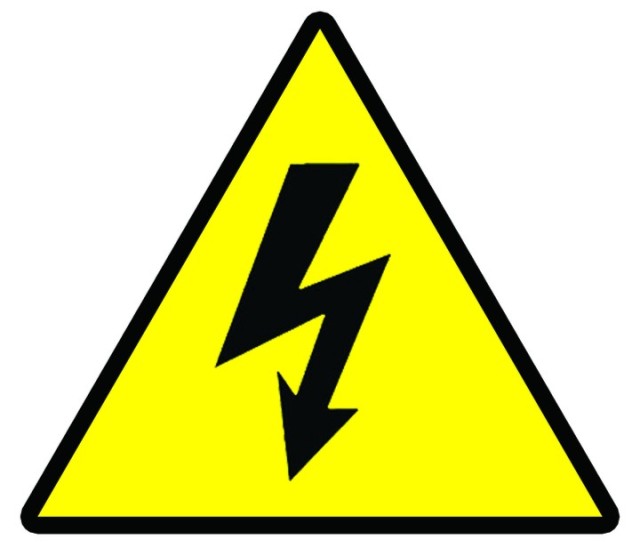Introduction
A rotary vacuum evaporator, also known as a rotovap, is a laboratory equipment used for distillation purposes. It is a highly efficient system used for the removal of solvents from samples under low pressure and low temperature. While using a rotovap, there are several common mistakes that people make, which can result in damage to the equipment or even cause harm to the user. In this blog post, we will discuss some of the common mistakes people make when using a rotovap and how to avoid them. By avoiding these mistakes, you can increase the lifespan of your rotovap and ensure your safety while using it.
Table of Contents
Not Properly Ventilating the Rotovap
Proper ventilation is crucial when using a rotary vacuum evaporator to prevent exposure to harmful fumes that can pose serious health risks to the operator. Failure to ventilate the rotovap can lead to the buildup of dangerous gases that can affect the health of the operator and other people in the laboratory. In this section, we will discuss the common mistakes to avoid when ventilating the rotovap.
Connect to exhaust system or fume hood
To avoid exposing yourself to harmful fumes, you must ensure that the rotovap is properly connected to an exhaust system or fume hood that can safely remove laboratory fumes. The exhaust system or fume hood should be able to handle the fumes produced during the evaporation process. Failure to connect the rotovap to an exhaust system or fume hood may result in the accumulation of harmful gases in the laboratory.
Wear appropriate personal protective equipment
When working with potentially hazardous solvents, appropriate personal protective equipment, such as a respirator, must be worn to avoid breathing toxic fumes. Respirators filter out harmful particles and fumes, protecting operators from potential harm. It is important to ensure that the respirator is installed correctly and is suitable for the type of solvent being used.

Ventilate after use
It is critical to ventilate the rotovap after use to remove residual fumes from the laboratory. Failure to ventilate the rotovap after use may result in the accumulation of harmful gases, posing a serious health risk to the operator and others in the laboratory. It is recommended to let the rotovap run for a few minutes after use to ensure that all remaining smoke is expelled.
Ventilate before disassembly
Before dismantling the rotovap, the system must be properly ventilated to avoid exposure to harmful fumes. Failure to ventilate the rotovap before disassembly may result in the release of harmful gases, posing a serious health risk to the operator and others in the laboratory. It is recommended to let the rotovap run for a few minutes before disassembly to ensure that all remaining smoke is expelled.
Check ventilation systems regularly
It is important to check your ventilation system regularly to ensure it is functioning properly. Any blockage or malfunction of the ventilation system can lead to the accumulation of harmful gases, posing a serious health risk to the operator and others in the laboratory. Regular maintenance and inspection of your ventilation system can help prevent any potential hazards.

In conclusion, when using a rotary vacuum evaporator, proper ventilation is critical to ensuring a safe and efficient laboratory environment. Operators should take care to avoid common mistakes, such as not properly ventilating the rotovap, which can lead to the accumulation of harmful gases. By taking appropriate precautions and following the above guidelines, operators can ensure safe and effective use of rotary vacuum evaporators.
Failure to place the Rotovap in a safe location
To ensure the safe and efficient operation of a rotary vacuum evaporator, it is crucial that it is placed in a safe location. Failure to do so may result in a range of problems, including equipment damage and user injury. Here are some important steps to follow when placing a rotovap:
Step 1: Choose a stable surface
The rotovap should be placed on a stable surface that can support its weight and prevent any accidental movement. A sturdy laboratory bench or bench is ideal. Avoid placing it near uneven surfaces or edges to avoid accidentally knocking it over.
Step 2: Clean up the surrounding area
The area around the rotovap should be free of any obstructions that could interfere with the equipment or pose a hazard to the user. Make sure there is enough room to move around the device and that there are no objects that could cause tripping or falling.
Step 3: Check the power supply
Make sure there is sufficient power and that the electrical outlet is properly grounded. Grounded electrical outlets will protect equipment from power surges and prevent users from getting electrocuted.

Step 4: Avoid exposure to vibration
The rotovap should be placed in an area free from excessive vibration. Vibration can cause the device to shift or shift while in use, resulting in damage to the device or injury to the user.
Step 5: Ensure proper ventilation
Proper ventilation is essential when using a rotary vacuum evaporator. The area where the rotovap is placed should have good air circulation to prevent the accumulation of solvent vapors, which could be dangerous to the user.
By following these important steps, researchers can ensure that the rotary vacuum evaporator is placed in a safe location and free of any potential hazards. This will help minimize the risk of accidents and ensure accurate and reliable results from the equipment.
Splash guard not installed correctly
One of the common mistakes users make when using a rotary vacuum evaporator is not installing the splash guard properly. Splash guards are an essential accessory to protect users from potential splashes of hot or corrosive liquids during the evaporation process.
The Importance of Splash Guards
Failure to install guards may result in severe burns or chemical exposure. To avoid this error, users should ensure that the splash guard is securely installed before starting the evaporation process. It is also important to inspect the guard for damage or wear before each use and replace it if necessary.
Steps to properly install a splash guard
Installing a splash guard is a simple process that can be completed in just a few simple steps. First, locate the splash guard and make sure it is clean and does not have any damage. Then, carefully place the splash guard onto the rotary evaporator, making sure it is securely attached.
Check splash guard
It is important to inspect the splash guard for any damage or wear before each use. This may include cracks, scratches, or any signs of wear. If the protective cover is damaged, it should be replaced before proceeding with the evaporation process.
Benefits of using a splash guard
Using a splash guard not only protects the user from potential splashes, it also helps prevent sample contamination. It also helps ensure that the evaporation process runs smoothly and efficiently without any interruptions.
in conclusion
In summary, installing a splash guard is a critical step when using a rotary vacuum evaporator. It is important to ensure that the guard is securely attached, inspect it for damage before each use, and replace it if necessary. By taking these precautions, users can ensure their safety and accurate results from their experiments.
Use solvent-intolerant glassware
When using a rotary vacuum evaporator, you must ensure that the glassware is resistant to the solvent used in the evaporation process. Choosing the wrong glassware can lead to component failure and potentially dangerous situations. Here are some important steps to avoid the mistake of using incompatible glassware:
Check chemical compatibility
Before starting the evaporation process, you should always check the chemical compatibility of the glassware with the solvent used. Make sure the glassware can handle the required temperature range and pressure conditions. If you are unsure about glassware compatibility, check the manufacturer's instructions or seek advice from a technical expert.
Use appropriate precautions
Proper precautions must be taken when handling glassware to avoid accidents. Wear protective equipment such as gloves, goggles, and lab coats. Handle glassware with care and avoid any sudden movement that could cause it to break. Use clamps or other securing devices to prevent glassware from falling or tipping over.
Check glassware regularly
It is crucial to regularly inspect your glassware for any signs of damage or wear. Check for cracks, chips or scratches that could compromise the integrity of the glassware. Replace any damaged or worn components immediately; failure to do so may result in equipment damage or personal injury.

By following these steps, you can ensure safe and efficient operation of your rotary vacuum evaporator, extend the life of your equipment, and minimize the risk of accidents. Remember, using incompatible glassware is one of the most common mistakes and can be easily avoided with proper precautions.
Level sensor not used
The liquid level sensor is a key component of the rotary vacuum evaporator. Not using a liquid level sensor can cause serious problems. The device monitors the level of solvent in the flask and automatically shuts down the machine when the level drops below a certain point. Without a level sensor, the evaporator can continue to operate even after all solvent has evaporated, which can lead to overheating and damage to the equipment and sample.
Risks of Not Using a Level Sensor
One of the biggest risks of not using a level sensor is the increased potential for fire or explosion. If the evaporator continues to operate after all solvent has evaporated, the flask may overheat, resulting in a fire. Fires can be particularly dangerous if the vaporized sample is flammable or explosive.
The importance of liquid level sensors
The liquid level sensor is an important part of the rotary vacuum evaporator as it ensures safe and efficient operation of the equipment. Using a level sensor can help you avoid damage to your equipment and samples, as well as prevent any potential safety hazards.
Proper training and caution
While a level sensor is essential, it is not a substitute for proper training and caution when operating equipment. Users should always read the manufacturer's instructions and follow best practices to ensure equipment operates safely and efficiently.
Other common mistakes to avoid
In addition to not using a level sensor, there are other common mistakes users can make when operating a rotary vacuum evaporator. For example, improperly maintaining a vacuum pump can lead to reduced efficiency and equipment damage. Additionally, using the wrong type of flask or not properly securing the flask can result in equipment damage or safety hazards.
In conclusion, the liquid level sensor is a critical component of the rotary vacuum evaporator, and not using a liquid level sensor can cause major problems. Users should always read the manufacturer's instructions and follow best practices to ensure equipment operates safely and efficiently. By avoiding common mistakes like not using a level sensor, users can extend the life of their equipment and get accurate and reliable results.
No secondary condenser installed
One of the most important mistakes that users often make when using a rotary vacuum evaporator is not installing a secondary condenser. The secondary condenser is a device used to condense solvent vapor escaping from the primary condenser. Without this equipment, vapor may condense in the vacuum pump, causing serious damage. In addition, there is a risk of contamination in the vacuum pump oil, which may affect the performance of the equipment and the accuracy of the results. To avoid this error, users should make sure to install a secondary condenser and monitor it regularly to ensure it is functioning properly.
What is a secondary condenser?
The secondary condenser is a device connected to the rotary vacuum evaporator to condense the solvent vapor escaping from the primary condenser. It is usually placed between the main condenser and the vacuum pump. The secondary condenser helps protect the vacuum pump from damage by preventing solvent vapors from condensing in the pump. Additionally, it helps protect the vacuum pump oil from contamination, which can affect the performance of the equipment and the accuracy of results.
The importance of installing a secondary condenser
Failure to install a secondary condenser can cause serious damage to the vacuum pump and rotary vacuum evaporator. Solvent vapor escaping from the main condenser can condense in the vacuum pump, causing damage to the pump and shortening its service life. In addition, contaminated vacuum pump oil may affect the performance of the equipment and the accuracy of the results. Therefore, a secondary condenser must be installed to prevent these problems.
How to install a secondary condenser
Installing a secondary condenser is relatively easy and can be accomplished by following these steps:
- Purchase a secondary condenser that is compatible with your rotary vacuum evaporator.
- Connect the secondary condenser to the rotary vacuum evaporator between the primary condenser and the vacuum pump.
- Make sure all connections are tight and leak-free.
- Test the secondary condenser to make sure it is working properly.
- Monitor the secondary condenser regularly to ensure it is functioning properly.
in conclusion
In summary, not installing a secondary condenser when using a rotary vacuum evaporator is a common mistake that can cause serious damage to the equipment and affect the accuracy of the results. Therefore, a secondary condenser must be installed and monitored regularly to prevent any problems. By following the above steps, users can ensure that their rotary vacuum evaporator works efficiently, provides accurate results and extends the life of the equipment.
Ignore strange noises or motor failures
Rotary vacuum evaporators are precision laboratory equipment that require proper handling and maintenance to ensure accurate results and longevity. A common mistake users make is ignoring strange noises or motor malfunctions, which can lead to device failure or inaccurate results.
Weird noises indicate a problem
Strange noises coming from your rotary vacuum evaporator may indicate a problem with the motor or other mechanical issue. Ignoring these noises can cause further damage and potentially lead to expensive repairs. Any unusual sounds coming from the device must be noted and immediate steps taken to prevent further damage.
Motor failure
Motor failure can occur if the equipment is not properly maintained or used beyond its rated capacity. It is crucial to regularly inspect and maintain equipment to prevent motor failure and ensure its longevity. If a motor failure occurs, be sure to stop using the equipment immediately and have it inspected by a qualified technician.
Prevention is better than cure
To avoid motor failure and strange noises, the manufacturer's maintenance and usage guidelines must be followed. Check your equipment regularly for any signs of wear, including frayed wires, loose connections, or damaged parts.
Maintenance tips

Proper maintenance helps prevent equipment failure and ensures accurate results. Here are some tips for maintaining your rotary vacuum evaporator:
- Always use equipment within its rated capacity.
- Clean equipment after each use.
- Regularly inspect and replace any worn or damaged parts.
- Lubricate moving parts according to manufacturer's guidelines.
- Keep the device in a dry and clean environment.
- Please store the device properly when not in use.
By following these tips and avoiding the common mistakes mentioned above, users can maintain the functionality and accuracy of their rotary vacuum evaporator, ultimately achieving better results in their laboratory experiments.
in conclusion
Using a rotary vacuum evaporator can be a complex process that requires a high level of technical knowledge and expertise. However, by avoiding some of the common mistakes outlined in this article, you can significantly reduce the likelihood of accidents, equipment damage, and other problems. It is essential to vent the rotovap properly, place it in a safe location, install a splash guard, use solvent-resistant glassware, install a level sensor and secondary condenser, and address any strange noises or motor failures promptly. By taking these precautions, you can ensure that your rotary vacuum evaporator operates smoothly and safely, providing you with accurate and reliable results.
Related Products
Related Articles
- Installation of Tube Furnace Fitting Tee
- A Comprehensive Guide to Understanding Rotary Evaporator Chillers
- Choosing the Right Rotary Vacuum Evaporator for Your Lab
- A Step-by-Step Guide to Using a Rotary Vacuum Evaporator for Solvent Removal
- How to Choose the Best Rotary Evaporator (Rotavapor) for Your Budget


